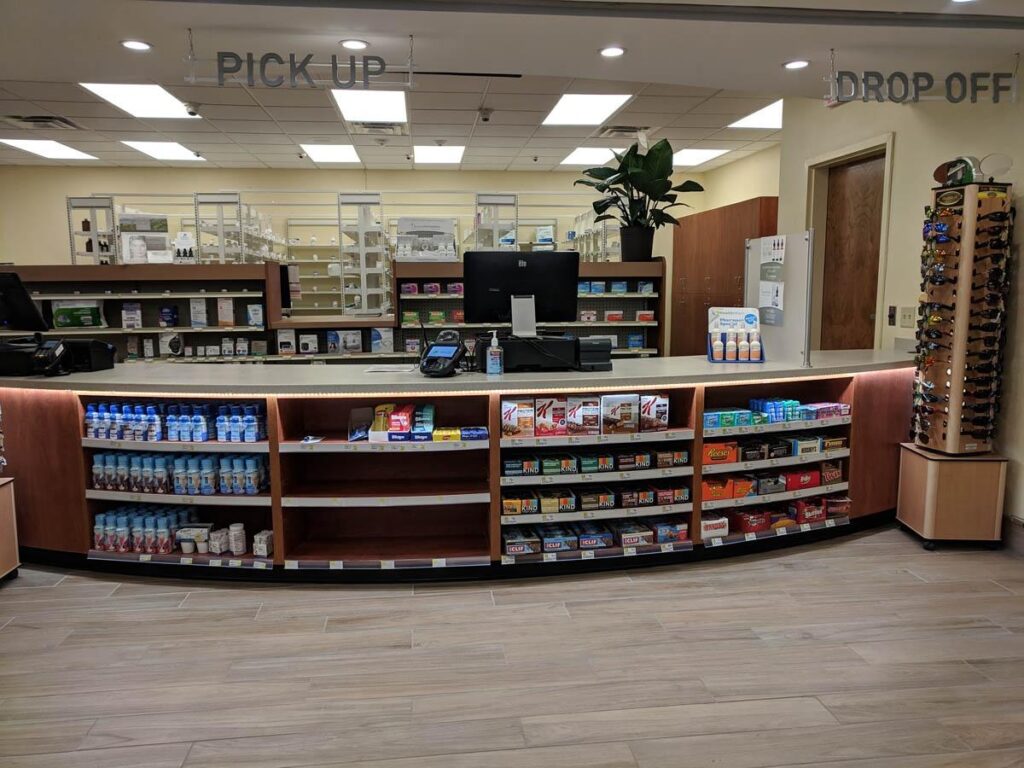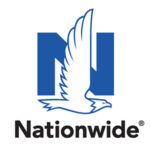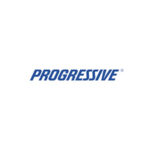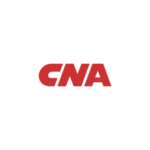Here is a step-by-step guide on how to open a pharmacy business. Begin your pharmacy business journey today! Become your boss and help the community. Understanding the requirements to open a pharmacy is helpful. The independent pharmacy world provides many opportunities for pharmacy owners. You can be your boss instead of working 60-hour weeks for a large pharmacy chain. Serve patients and empower them to take control of their health.
However, the truth is…starting a pharmacy requires a lot of effort. No matter what you read, it’s a long process from beginning to end. You’ll face challenges along the way. For instance: City permits are always difficult. Find a general contractor who cares about your project. Dealing with your state board of pharmacy, and expect delays. Our pharmacy consultants can simplify these procedures for you with their experience and expertise.
Remember every state is different and some are easier than others to open a pharmacy.
Key Takeaways:
- Gain an understanding of the different pharmacy business types and their services.
- Conduct market research to identify target demographics, analyze competition, and gather customer feedback.
- Create a business plan considering legal/financial factors, choose the ideal location, and set up a pharmacy with software & supplies. Market & promote effectively for a successful opening day & ongoing success.
20-Step Checklist on How To Open a Pharmacy Business
Here are the 20 steps for operating a pharmacy:
Create a Business Plan:
Define your business goals, mission, and vision. Outline your pharmacy’s services, target market, and advantage.
Legal Structure and Registration:
Choose a legal structure (e.g., LLC, Corporation) and register your business with appropriate state and federal authorities.
Secure Financing:
Determine your startup costs and secure funding through personal savings, loans, investors, or grants.
Location Selection:
Find a suitable location for your pharmacy that meets zoning requirements and has good visibility and accessibility.
Licensing and Permits:
Apply for the necessary state and local licenses and permits to legally operate a pharmacy.
Build Relationships with Suppliers:
Establish partnerships with pharmaceutical wholesalers and distributors.
Pharmacy Design and Layout:
Design your pharmacy’s interior layout for efficiency and customer flow, complying with accessibility regulations.
Hire and Train Staff:
Recruit licensed pharmacists and support staff. Ensure they are properly trained and certified.
Inventory Management:
Set up inventory management systems to track medications, supplies, and expiration dates.
Pharmacy Software:
Invest in pharmacy management software for prescription processing, billing, and record-keeping.
Insurance and Liability for pharmacy business:
Obtain business insurance, including liability and professional indemnity coverage. It is imperative to have cybersecurity insurance to protect you from loss of patient data.
Compliance and Regulations:
Comply with state and federal regulations, including Drug Enforcement Administration (DEA) requirements.
Marketing and Branding:
Develop a marketing strategy to promote your pharmacy locally.
Secure Contracts with Payers:
Negotiate contracts with insurance providers and pharmacy benefit managers (PBMs) to accept prescription plans.
HIPAA Compliance:
Implement measures to ensure patient data privacy and comply with Health Insurance Portability and Accountability Act (HIPAA) regulations.
Build Relationships with Healthcare Providers:
Network with local healthcare providers to establish referral relationships and enhance your pharmacy’s reputation.
Stock Non-Prescription Items:
Offer over-the-counter (OTC) products, vitamins, and other health-related merchandise to increase revenue.
Customer Service Excellence:
Focus on excellent customer service to build a loyal customer base.
Marketing and Advertising:
Develop marketing campaigns to attract new customers and retain existing ones.
Continuous Improvement:
Continuously evaluate and improve your pharmacy’s operations, services, and inventory based on customer feedback and industry trends.
Remember that opening and operating an independent pharmacy is a long-term commitment requiring business acumen, healthcare expertise, and regulatory compliance. Seek legal, financial, and pharmaceutical advice when necessary to successfully navigate the complexities of the industry.
Before opening an independent pharmacy, you should research and understand some key pharmacy concepts.
These include
- pharmacy software systems to manage your workflow and services
- finding a visible location for patients
- hiring a contractor familiar with healthcare privacy laws for construction
- determining your starting inventory
- securing financing if needed
- utilizing technology to reach patients
- effective pharmacy marketing techniques
Taking the time to research each of these areas thoroughly will help set up your independent pharmacy for success. Focusing on location visibility, privacy-compliant construction, optimized inventory, financing options, patient-focused technology, and pharmacy-specific marketing are essential steps when starting an independent pharmacy.
Opening a pharmacy requires a substantial financial investment.
Expect to spend at least $400,000 to launch even a small pharmacy. Lenders will want you to contribute some of your capital, which demonstrates your commitment to the venture. Be prepared for extensive background checks of your credit history and work experience, as you are borrowing directly from the bank. Consult a financial advisor if you have any concerns about funding your pharmacy.
Before hiring employees, every business must obtain an Employer Identification Number (EIN) from the IRS. Download the SS-4 form from irs.gov and submit it to get your EIN.
There are a few banks that specialize in lending to pharmacy owners. Check for reputable banks that have expertise with pharmacy start-up loans makes them preferable to general banks. Also, look into the Small Business Administration for potential loan programs.
Launching a pharmacy requires a significant upfront investment. You’ll need to learn how to successfully apply for business loans from banks familiar with the pharmacy industry. Once open, you must understand cash flow, budgeting, managing expenses, and generating revenue to keep the pharmacy operating.
How to navigate the loan process when opening a pharmacy?
Prepare your business plan and documents thoroughly: We recommend being well prepared with all necessary documents like a detailed business plan. This plan should include financial projections, expected revenue, all operating costs, profitability analysis, and more. To get help creating a business plan, consider using the SBA’s guide or contacting pharmacy consultants.
Have sufficient capital to sustain initial years: Most pharmacies do not make a profit in the first year or two. Account for this when seeking a loan. Ensure you have enough funds to cover expenses like employees, insurance, etc. during the initial period. If needed, consult financial advisors for advice.
Choosing the right pharmacy location is critical for success. Research locations thoroughly, as many pharmacies fail simply because customers don’t know about them.
Location and market research are crucial when starting a pharmacy business. Choosing the right location involves investigating if there are other pharmacies, especially large chains, already in the area. Even if major chains have a presence, there may still be opportunities for an independent pharmacy, as many customers become dissatisfied with the chains for various reasons and may be ready to switch. It’s also important to check if there are medical offices and prescribers nearby, even visiting them to ask if they think the community could benefit from a new independent pharmacy. The pharmacy should be in a spot with high visibility from busy roads so potential customers see it and know they have options besides the chains. Research your target demographic to understand what services, like free delivery or medication synchronization, would appeal to them. While a comprehensive business plan requires more components, focusing on location and market research provides a strong foundation. Resources like the NCPA’s pharmacy business plan checklist can help ensure you cover all necessary details in the most thorough way possible.
Planning a pharmacy layout can be exciting but costly.
This involves designing the floor plan, building it out, and installing all the fixtures. Everyone wants an attractive, vibrant pharmacy without overspending on decor. The key is finding qualified contractors at reasonable prices.

Consider how you want the workflow to go. Map out where staff and customers will move and interact before starting the design. Will items pass left, center, or right? Will there be an extra computer station in the back? Where will the cash register be? Don’t forget the drive-thru if you’re having one. Most pharmacy workflows revolve around software and tech. We’ll get to that later.
Find a general contractor who cares about the project: In my experience as a pharmacy consultant, about 70% of contractors overcharge and under-deliver. Ask other business owners for referrals. Check the BBB for your area too. Consider the contractor’s relationship with the city, as they often handle permits. If your contractor is in good standing, the process should go more smoothly.
Make an enduring impression on new patients by selecting a pharmacy-specific cabinetry company. They have expertise in designing cabinets tailored to pharmacy workflows and layouts. A reputable company will visit your pharmacy to grasp your needs.
Be prepared for hefty cabinetry costs. Most pharmacy projects cost at least $30,000, frequently exceeding $150,000 for larger pharmacies.
Ensure ADA and HIPAA compliance for accessibility. Follow ADA guidelines to make your pharmacy accessible to all. Pharmacy Times explains the importance of ADA compliance for pharmacies. HIPAA guidelines should also be incorporated into your cabinet design. An experienced designer will know these. After cabinet installation, you can usually apply for state licensing and DEA registration.
What license do I need to open a pharmacy?
Every new pharmacy business needs proper documentation, especially due to extensive regulation. First, register your business as a legal entity in your state, get your federal Employer Identification Number (EIN), and open your initial business bank account.
After completing these foundational steps, review the state and federal requirements for operating a pharmacy, including licenses and permits. Note that these can vary based on your location.
Typical requirements are:
- State pharmacy license or permit
- Controlled substance registration
- National Council for Prescription Drug Programs (NABP/NCPDP) number
- Drug Enforcement Agency (DEA) number
- National Provider Identifier (NPI) number
- Pharmacy Business Insurance
Also, if you plan to practice in your pharmacy, you’ll need to meet state licensing requirements for pharmacists.
Pharmacy marketing and brand logo design
Just like with any business, pharmacies require strategic marketing to attract new patients and prescribing doctors. Most pharmacies only market to patients and overlook the prescribers who can send patients their way! Having a reliable brand will help. Your marketing objective should be retaining loyal customers.
Ensure people know your pharmacy exists, including prescribers. Provide unique and customizable services that will benefit your patients. Let’s review some key points about marketing and developing your brand.
Pharmacy Name and Branding: Picking a pharmacy name is harder than it seems. You can opt for a traditional name or a more modern, short name. See our article on selecting a pharmacy name. Once you decide on your name, register your domain with GoDaddy, BlueHost or another domain registrar.
Designing your logo and website: Every pharmacy requires a professional and trustworthy logo and website. We suggest having a professional design your pharmacy logo and website. Successful pharmacies build and spread brand recognition through professional design. View some of the logos and websites we’ve designed for our clients. We would be happy to help you start building your pharmacy brand.
Pharmacy business marketing plan
Before and after opening your new pharmacy, it is important to develop an effective marketing plan. This plan should include various tactics to grow your business, increase your customer base, and reach new patients. Some ideas could be mailings, social media posts, Google Ads, grand openings, and more. Review marketing plan resources to help get started. An intelligent marketing strategy can give a new pharmacy a strong beginning. Here are some concepts for promoting your pharmacy:
Offerings – Delivery, medication synchronization, medication packaging, medication therapy management, immunizations, short wait times, travel health services, etc.
Staff – Promoting your qualified team shows patients your pharmacy’s sincerity. This works very well in small communities.
Pricing – Many people assume an independent pharmacy costs more than a large chain. Demonstrate you can save customers money by shopping locally.
Community Involvement: An excellent marketing technique is participating in local events. Be sure to attend healthcare-related activities and join city boards and meetings. Talk to other business owners to understand operating in your area.
Social Media: Most people now use social media. With a small budget, you can market on platforms like Facebook. Target people around your pharmacy and post fresh content weekly. Consider working with a digital marketing agency for social media, SEO, and Google Ads.
Pharmacy App: Developing a pharmacy app adds convenience for patients. Most pharmacy and IVR systems can create a mobile app.
In summary, an effective pharmacy marketing plan utilizes various promotional strategies to establish your new business, expand your customer base, and reach more patients in your area. Let me know if you would like me to clarify or expand on any part of the paraphrased version.
The latest technologies are crucial for pharmacy businesses.
Having the right tech is vital because pharmacies depend heavily on technology. Pharmacies utilize various technologies like pharmacy management systems, robots, workstations, printers, networks, interactive voice response (IVR) systems, internet connections, prescription lookup services, point-of-sale systems, delivery routing software, etc. Our Technology Learning Center provides useful information on the different technologies used in pharmacies. Each technology plays a key role in pharmacy operations, so let’s examine some of them:
IVR systems provide automated phone menus when patients or prescribers call the pharmacy. This allows 24/7 refill requests, which patients and prescribers expect nowadays. So IVRs are essential for all pharmacies. IVRs can also automatically notify patients when their prescriptions are ready for pickup. Some IVR systems integrate better with certain pharmacy management systems.
Computer Hardware for Pharmacies
When it comes to computers, printers, scanners, tablets, and other tech devices, pharmacies have a couple of options for purchasing. They can buy directly from their pharmacy management system vendor, or they can purchase the items independently. If pharmacies buy their hardware through the pharmacy system company, they will likely overpay because that equipment tends to be outdated and overpriced. Pharmacy system vendors profit from marked-up hardware sales to their pharmacy customers.
However, to get newer equipment for less money, pharmacies can buy hardware on their own. We’ve compiled a list of commonly used pharmacy tech devices to help pharmacies find better deals. Our guide covers hardware and network gear that pharmacies can purchase independently to save money. However, we recommend getting certain key items like pharmacy servers and POS equipment directly through the pharmacy system vendor.
Reliable and consistent internet and phone connections are vital.
Telephone and Internet: Pharmacies use both telephone and internet services to function. You’ll want to ensure you have a steady internet and telephone connection. A backup internet is always suggested because there will be times when your internet fails. Another thing to mention is VOIP phone services. VOIP is a newer technology that allows phone calls to go through the internet. VOIP often has much lower prices than traditional phone services. Make sure you get a good rate on both services. Security: A must-have in any pharmacy is security. Therefore, we recommend having cameras and alarms in all pharmacies. Most states require an alarm system but cameras are optional. Nowadays, alarms and cameras are controlled and viewed on your smartphone. They don’t cost an arm and a leg anymore.
Procure Pharmaceutical Stock and Supplies
Obtaining pharmaceutical stock and supplies is imperative when launching a pharmacy business in the United States. Guaranteeing consistent availability of medications and other vital items is crucial for effective pharmacy operations. Here are some key considerations when procuring stock and materials for your pharmacy:
Supplier Research: Identify and evaluate reputable pharmaceutical wholesalers and distributors. Choose providers offering extensive product ranges, competitive costs, and dependable delivery.
Product Selection: Decide which pharmaceutical offerings to stock, potentially including prescription drugs, over-the-counter medications, medical supplies, and healthcare goods.
Inventory Control: Implement efficient inventory management practices. Use inventory software to monitor stock levels, track expiry dates, and streamline ordering.
Regulatory Compliance: Verify that acquired products meet all Food and Drug Administration (FDA) and other relevant regulatory guidelines. Only source from licensed, authorized suppliers.
Bulk Buying: Consider bulk purchases of frequently used products to get volume discounts, reducing expenses and raising profit margins.
Diversification: Avoid relying on just one supplier for all stock. Having multiple suppliers provides options, flexibility, and backup for supply disruptions.
Quality Assurance: Prioritize procuring high-quality products. Your pharmacy’s reputation depends on providing safe, effective medications.
Stock Rotation: Follow first-in, first-out (FIFO) to dispense older inventory first, preventing wastage from expiration.
Negotiation: Develop negotiation skills to get favorable supplier terms on pricing, delivery, payment, etc.
Contingency Planning: Have emergency plans to address supply chain disruptions and stock key medications.
Market Awareness: Stay updated on industry trends and new releases. Offer innovative, in-demand products to remain competitive.
Ethical Sourcing: If providing complementary medicines or supplements, ensure they meet ethical and safety standards.
In summary, smart management of your stock and supplies is vital for pharmacy success. Maintaining excellent product availability builds your reputation for outstanding patient care.
Choosing a pharmacy system
Choosing a pharmacy system is a lengthy process involving research and product demos. Vendors may try to dazzle you with flashy booths and giveaways at pharmacy trade shows. But stay focused on how the software can help you achieve your pharmacy’s goals; don’t get distracted by bells and whistles. Do your homework and select pharmacy software that truly fits your business needs. We’re here to assist with recommendations for pharmacy systems. Below are some key factors to weigh when selecting a pharmacy system.
Consider your current and planned services: Opt for a pharmacy system with modules that support all the services you offer or plan to add, such as compounding or mail order. Some systems are stronger for certain services, so ask other owners which they prefer.
Spend a week test-driving systems: Set aside a full week for evaluating 4-5 different pharmacy systems. Learn about and evaluate each product’s features. Keep your workflow needs in mind and how the software could optimize efficiency.
Ease of learning: How much training and time will it take staff to become proficient with the system? Some highly sophisticated systems may require 4-6 months before fully mastered. Others can be learned in just days. If operating multiple pharmacies, a simpler system may be better for training new users quickly.
When picking a pharmacy system, be sure to think ahead and consider future expansion. Does it have mobile capabilities that allow you to access it remotely from a laptop at health fairs or physician offices? Can it handle mobile payments when delivering prescriptions to patients’ homes? Some systems even have route mapping for deliveries.
Regarding training, every pharmacy software should provide some form of instruction, whether on-site at your pharmacy or over the phone.
Don’t overlook the point-of-sale system, which is a critical but often neglected part of pharmacy software. The POS should be simple, clear, and offer robust reporting. There are some really poor POS systems out there, so carefully examine the POS when evaluating any pharmacy software.
Hiring the right staff is critical
Opening your pharmacy is just around the corner. Hiring the right staff is critical for your pharmacy’s success. There are legal requirements around hiring that you must follow. Before starting the hiring process, get advice on tax forms, government regulations, and insurance needs to ensure compliance.
Even if you have hiring experience from a previous job, hiring well is an art. Your first hires should be excited about your start-up. Let’s explore some hiring essentials and tips.
You must register with your state labor department as an employer to hire staff. This registration requires paying state unemployment taxes, which fund the state’s unemployment compensation program. Check the Department of Labor’s website for your state’s unemployment insurance agency to register.
Workers’ Compensation:
Another requirement in most states is workers’ compensation. This protects employees from injuries that happen on the job.
Setting up payroll: There are many payroll options available. Online payroll services like Paycor and ADP are great choices for handling payroll.
Posting a job listing:
Writing a detailed job description can be challenging for pharmacy owners. You want to make sure you don’t leave anything out. Since independent pharmacy employees often wear many hats, unlike at large chains, you should try to include as much as possible in the job posting. Here is a helpful guide on writing job descriptions for business owners.
Interviewing potential team members:
Before meeting an applicant in person, have a 10-15 minute phone call. During this call, ensure they meet the basic requirements and listen to their phone etiquette. During in-person interviews, be sure to ask the right questions – about their pharmacy experience, strengths, and weaknesses. Emphasize that patients come first in community pharmacy.
In the interview process, determine if the applicant will be a good fit with you and your team. Ensuring employees work well together is probably the most important factor.
Ready to Open Your Own Pharmacy? Here’s What You Need to Do
So you have an interest in beginning your very own pharmacy? That’s a wonderful concept! It would be an extremely rewarding and beneficial service for your neighborhood. However, before jumping in, there are a few key things you’ll need to do to get set up. Let’s break it down in simple terms.
-
Training and Certification: To open a pharmacy, you have to be a professional pharmacist. This means completing pharmacy school and passing licensing exams. It’s like getting your driver’s license but for being a pharmacist.
-
Business Strategy: Just like planning a road trip, you require a roadmap for your pharmacy. Make a strategic business plan that describes your goals, target customers, and how you’ll generate income.
-
Find the Perfect Location: Location is crucial! It’s not just where you want to be; it’s where people need your pharmacy. Seek out a spot where there aren’t too many other pharmacies nearby and where people can easily access you.
-
Legal Requirements: There are regulations you must follow. You’ll need a special license from the government to operate a pharmacy, and rules about which medicines you can provide.
-
Decide How to Structure Your Business: You can run your pharmacy solo or with partners. You may want to consult a lawyer about this part.
-
Design Your Pharmacy: Consider how you want your pharmacy to look. How will it be arranged inside? Where will the shelves go? It’s like decorating your room, but with medical supplies.
-
Stock Up on Inventory: You’ll need medicines and products to sell, right? Find suppliers who can provide you with what you need to help people feel better.
-
Recruit a Team: You can’t do it all alone. You’ll need staff like other pharmacists and techs to assist you.
-
Implement Technology: Technology is your ally. Get a computer system to help track prescriptions and ensure smooth operations.
-
Finances: You’ll need capital to launch your pharmacy. Figure out how much you need and where it will come from. It’s like budgeting for a big vacation.
-
Protect Your Business: Just like locking your house when leaving, you need to secure your pharmacy. Install alarms and cameras to safeguard your business.
-
Spread the Word: No one will visit if they don’t know about your pharmacy. Make a website, leverage social media, and tell everyone in the area.
-
Provide Extra Services: Make your pharmacy special by offering services like prescription compliance checks, immunizations, or health screenings.
-
Follow the Regulations: The government has rules to ensure medicine safety. Make sure you adhere to these and keep tidy records.
-
Care for Patients: Most importantly, always put patients first. Be kind, answer their questions, and help them feel better. Happy patients become repeat customers!
As you get ready to open your pharmacy, it’s key to plan and execute successful soft openings and grand openings to introduce your business to the neighborhood, get feedback, and make an enduring impression. This part will talk about the benefits of a soft opening and provide tips for a triumphant grand opening.
A soft opening, typically a few weeks before the grand opening, allows you to open to a small group of customers to:
-
Test and refine your processes
-
Meet patients
-
Address questions
-
Gather feedback
This gives you a chance to guarantee everything is working before the official grand opening.
To arrange a successful grand opening event, make a timeline, set a budget, design promotional materials, and organize the event itself. Ensuring a memorable experience for customers, delivering exceptional service, and guaranteeing adequate stock and organization will leave a lasting impression.
So in summary, opening a pharmacy is a bit like planning a big excursion. You need to be ready, know your destination, and have everything in place. Best of luck on your journey to open a pharmacy and serve people in your community! Remember, it’s a big step but with the right preparation, you can make it happen. Now go make your pharmacy dream a reality!
The following mistakes should be avoided when opening a new pharmacy:
Selecting the best locations to open a pharmacy- Choose a highly visible spot on a busy main road or intersection, as chain pharmacies do. Avoid side streets or business districts with low traffic. You want potential patients and prescribers to easily find you.
Not knowing your target customers – Understand who your market is and what services they need. Don’t assume customers know what you offer. Prominently display your services on signs, marketing materials, window decals, building signs, and delivery vehicles. Emphasize delivery, compounding, education, and packaging.
Lacking a business plan – Have a solid business plan to understand your financing options and profit expectations. Lenders will want to see your strategy for a viable business.
Not focusing on community – Community pharmacy differs from chains like CVS or Walgreens. Customers expect personalized service and consultations. Be prepared to answer health questions and build relationships.
No expert consultants – Consider hiring a consultant if you lack pharmacy opening experience. They can guide you and help avoid expensive mistakes.
No marketing strategy – Initially spend 2-4 days per month on marketing. A common mistake is not dedicating enough time to grow and promote the pharmacy. Go to community events and meet with prescribers.












